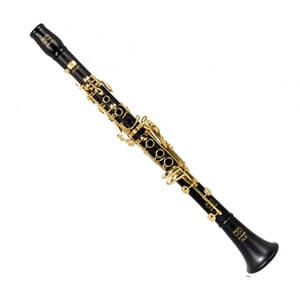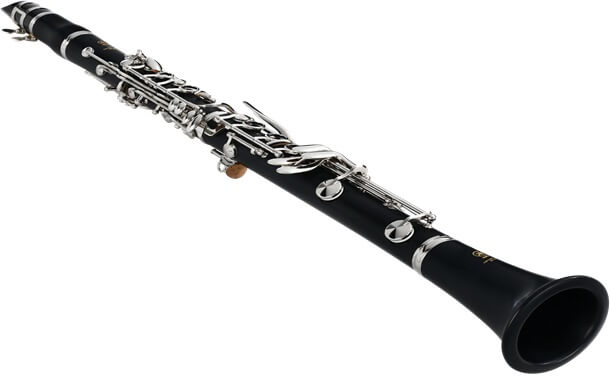How Much Does a Clarinet Cost?
Last Updated on March 27, 2024
Written by CPA Alec Pow | Content Reviewed by ![]() CFA Alexander Popinker
CFA Alexander Popinker
With a light, agile tone capable of great range and expression, the clarinet is one of the most common instruments in school bands and orchestras. However, clarinet prices span a wide spectrum, ranging from just a few hundred dollars for basic student models to over $10,000 for handcrafted professional clarinets.
In this guide, we’ll cover the many variables that impact costs, including instrument types, manufacturing materials, skill levels, additional accessories and maintenance, where to buy, and maximizing your investment. Understanding these key factors allows you to make an informed clarinet purchasing decision.
How Much Does a Clarinet Cost?
A clarinet costs anywhere between $300 and $10,000 or more. When selecting a clarinet, it’s very important to match the instrument quality to the player’s current skill level and needs. Prices vary significantly based on the intended use:
Beginner Clarinets
- Typical Price Range – $300 to $600
- Characteristics – Durable plastic construction, softer reeds, basic keywork for easy playability.
- Best For – New students just starting out. Ideal for the first 2-3 years of learning.
Intermediate Clarinets
- Typical Price Range – $600 to $1,200
- Characteristics – Hard rubber or composite materials provide a better tone. Additional keywork improves playability and range. Step-up models.
- Best For – Advancing students who have mastered a beginner clarinet but aren’t yet at the professional level.
Professional Clarinets
- Typical Price Range – $2,000 to $10,000+
- Characteristics – Made from the finest wood like African blackwood. Hand-finished and assembled, with the best tonal quality and acoustic properties. Fully customizable.
- Best For – Advanced students pursuing music degrees. Professional orchestral, chamber, solo, and jazz musicians. Serious hobbyists.
This graduated pricing structure allows new students to buy affordably while professionals invest in tools for virtuosic playing. Matching the right clarinet to skill level prevents overspending but still provides quality sound.
A discussion on Woodwind Forum reveals that clarinets can have an insurable value of around $1,200, but the actual resale value is lower, with a brand new $1,200 clarinet potentially selling for around $650 on eBay. The prices mentioned are based on observations of clarinet price sales and do not include damaged or repaired clarinets.
Tarpley Music offers a range of clarinets for sale, with prices varying from $2,293.99 to $3,685.99 for brands like Buffet and Yamaha. The selection includes professional, semi-professional, and custom clarinets catering to different performance needs and budgets.
Bertrand’s Music Online Rentals lists clarinets for sale, such as the Buffet BC2301-2-0 L6 Eb Clarinet on sale for $2,812.00 and the Buffet E11 Clarinet. The prices range from $1,198.00 to $4,913.99, providing options for different clarinet models and price points.
Clarinet Basics
Clarinets come in a variety of types, with some more commonly used than others:
- The Bb clarinet is by far the most popular type, used in most school bands and orchestras. The Bb clarinet provides the quintessential clarinet tone quality and range.
- A clarinets are less common but may be used in some orchestral settings for certain pieces in sharp keys.
- Eb clarinets are pitched higher and provide a bright, piercing timbre. Frequently found in wind ensembles.
- Bass clarinets are larger with an extended lower range and warm, rich tone. Seen in concert bands and some orchestral works.
- Other types like alto clarinets and contrabass clarinets exist for specialized uses.
The most common and cost-effective choice for students is the Bb soprano clarinet.
In addition to types, construction materials make a big difference in sound quality and cost:
- Plastic clarinets are the most affordable option but offer inferior tone and durability compared to wood models. Best for absolute beginners.
- Hard rubber provides better acoustics than plastic. Used for student/intermediate clarinets.
- Wood clarinets have the best resonance and tone. Grenadilla wood, also called African blackwood, is most prized for its beauty, hardness, and sound.
The combination of clarinet type and materials determines the approximate pricing. Now let’s detail costs based on skill levels.
Additional Costs Beyond Just the Instrument
Beyond the clarinet itself, there are supplementary expenses to account for in your budget:
Care and Maintenance
- Professional servicing and tuning yearly: $80 to $150
- Occasional pad replacements: $150 to $300
- Adjustments and repairs: $30 to $200+
Accessories
- Reeds – Box of 10 reeds: $30 to $50. Need to replace monthly.
- Mouthpieces – From $30 for beginners up to $200 for professionals.
- Ligatures – $15 to $30 to hold the reed onto the mouthpiece.
- Clarinet case – $50 to $150. Essential for storage and transport.
- Cleaning supplies – $10 to $30 for brush sets, swabs, lubricants.
Musical Development
- Sheet music – $5 to $25 for solo books or band music. Adds up over time.
- Lessons – $30 to $60 per hour for weekly private clarinet lessons to continually improve.
You might also like our articles about the cost of a trombone, tuba, or saxophone.
Factor in these recurring supplementary costs when making your clarinet purchasing decision. The initial price is just part of the investment over years of playing.
Purchasing New and Used Clarinets
 Clarinets can be purchased through various avenues:
Clarinets can be purchased through various avenues:
Local Music Stores
The benefits are personalized service, the ability to test play instruments, and financing plans. Limited selection. Pricing may be marked up.
Online Retailers
Offer wider selections but can’t test in person. Most allow free returns within trial windows. Often better pricing than local stores.
Classified Listings
Buying second-hand can mean major savings. However, harder to judge condition and playability beforehand. Risk of unexpected repairs.
When evaluating used instruments, carefully inspect the keys, pads, and wood for cracks or damage affecting playability and sound. Be prepared to invest $100+ fixing issues. In-person transactions are best for testing used clarinets before purchasing.
Maintaining and Maximizing Your Investment
Protecting a clarinet’s value over years of use requires:
- Bringing to a qualified repair tech for yearly servicing – $80 to $150 per visit.
- Swabbing out moisture after every session. Reduces pad and key damage.
- Storing the clarinet properly in its case when not playing. Never loose in a bag.
- Avoiding over-tightening of barrel and bridge keys which can crack the wood. Grease joints regularly.
- Considering a step-up model once reaching an intermediate or advanced skill level, to take advantage of professional clarinet qualities.
With proper consistent care, even student clarinets can last many years. But upgrading is recommended as abilities improve.
Final Words
In summary, clarinet prices cover a wide spectrum, ranging from $300 student models to $10,000+ professional clarinets, with many options in between. Carefully evaluate the player’s abilities and needs when investing.
Account for supplementary costs like reeds, servicing, and lessons in your budget. With informed research into the many clarinet options, it’s possible to find models that fit your skills and budget. This allows the instrument to support and enhance musical enjoyment for years to come.
Frequently Asked Questions
How does clarinet cost compare to flute pricing?
On average, clarinets cost somewhat more than flutes at every level. Beginner flutes can be found for $150-400 vs $300-600 for starter clarinets. Intermediate and professional clarinet pricing is also higher than flute equivalents, due to more precision keywork parts. However, used deals on either instrument can provide savings.
Are clarinets difficult instruments for beginners to pick up?
Clarinets do present some initial challenges, including breath control, embouchure development, and finger dexterity, more so than instruments like guitar or piano. Producing clear tones takes practice.
However, consistent practice and stepping up to better quality instruments over time can make clarinets highly rewarding for student musicians. Finding an encouraging teacher is key.
What’s harder for a beginner to learn – clarinet or guitar?
Overall, clarinet is considered more difficult for most students to pick up initially. Clarinet requires intricate finger coordination using many keys, while guitar can be self-taught more easily.
However, both instruments require dedication to progress. Trying introductory lessons for each can help determine what resonates most with one’s interests and strengths. With commitment, either instrument can be mastered over time.


Leave a Reply
Want to join the discussion?Feel free to contribute!